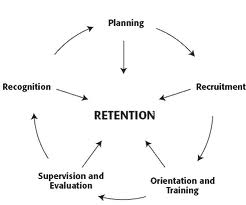 Back in October, I outted myself as a fundraising professional who isn’t very fond of special events when the purpose of the event is to raise money. I don’t know how many times I’ve shared the link to Charity Navigator’s 2007 Special Events Study with subscribers to this blog. I’m sure it has been too many times, but I’ve haven’t seen anything else that more convincingly makes the case that special events cost more money than they raise.
Back in October, I outted myself as a fundraising professional who isn’t very fond of special events when the purpose of the event is to raise money. I don’t know how many times I’ve shared the link to Charity Navigator’s 2007 Special Events Study with subscribers to this blog. I’m sure it has been too many times, but I’ve haven’t seen anything else that more convincingly makes the case that special events cost more money than they raise.
However, my position on special events does change when the objectives associated planning and hosting an event are more inclusive than: “let’s make some money.”
So, some of you might be asking: “What other objectives could there be?” Well, try some of these on for size:
- Engaging new volunteers from a different social circle in your community.
- Introducing yourself to a new set of prospective donors from a different social circle in your community, and cultivating new prospective donors for your individual giving annual campaign.
- Stewarding existing donors by providing them an enchanted evening awash in mission-focus.
- Marketing and getting your agency’s brand into the media marketplace.
I think it is great if your agency wants to run a few (e.g. one, two or three) special events as part of its annual resource development plan. However, I encourage you to ask the following questions before doing so:
- How does this event support other aspects of your fundraising plan?
- Who is the target audience for each of your special events? Does this event really do a good job of engaging that segment of the donor marketplace?
- Are you just sending invitations out to those who attended last year? Are you just blasting invitations out to your entire donor database? Or are you thoughtfully engaging your event committee in identifying new prospective attendees who fit within the target audience parameters you’ve set?
- How are you injecting “mission-focus” into each of your events so new prospective donors are getting cultivated and current donors are getting stewarded?
There is something very powerful about throwing a party focused around your agency’s mission. If it is done haphazardly and all in the name of “raising some money,” then you most likely didn’t raise the money you thought you did (read the Charity Navigator report and look at both direct and indirect costs) and you also missed an opportunity.
However, if you are strategic in your approach to special events, then I suspect you are seeing improvements in your overall fundraising program and starting to attract new donors.
Is your non-profit organization “strategic” in its approach to special events? If so, how? Please use the comment box below to answer these questions. The one or two minutes it takes for you to comment might make a huge difference in another fundraising professional’s life.
Here’s to your health!
Erik Anderson
Founder & President, The Healthy Non-Profit LLC
www.thehealthynonprofit.com
erik@thehealthynonprofit.com
http://twitter.com/#!/eanderson847
http://www.facebook.com/eanderson847
http://www.linkedin.com/in/erikanderson847





















